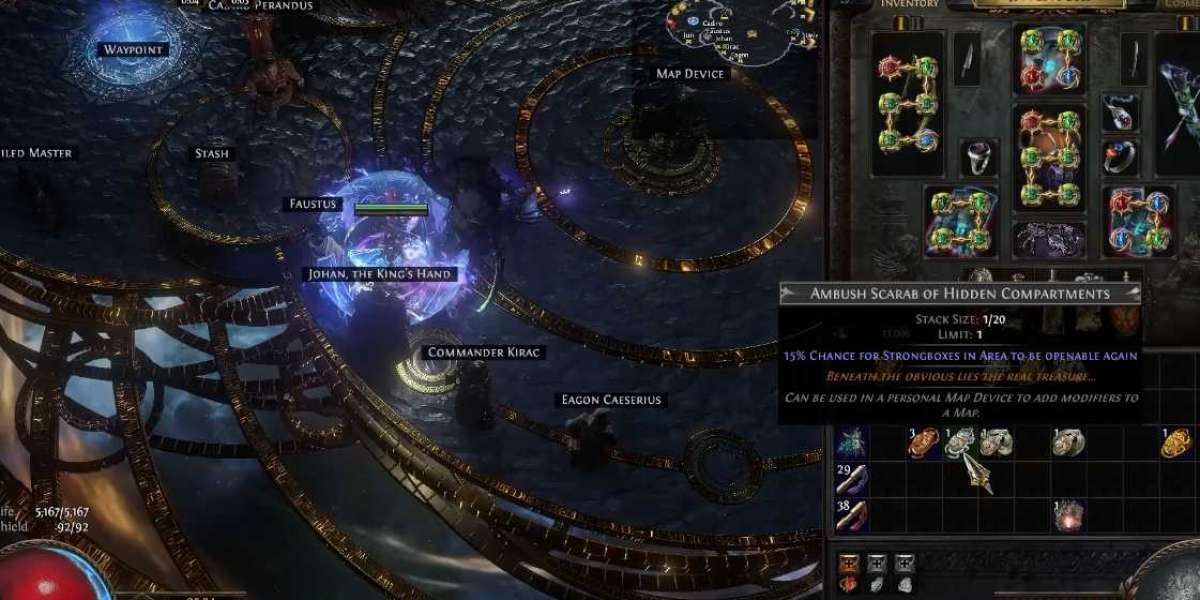Path of Exile (PoE) drops you into the grim, dark continent of Wraeclast, a land of exiles, nightmares, and relentless monsters. Its deep systems, massive passive tree, POE currency and complex economy can overwhelm new players. This MMOexp Beginner’s Guide will give you a strong starting point so you can survive, thrive, and dominate from your very first session.
1. Understanding Path of Exile’s Core Mechanics
Before you pick up your first weapon or spell gem, grasp the fundamentals:
Freeform Builds: Your class only sets starting stats and location on the passive tree; any character can use any skill gem.
Skill Gems: Abilities come from equippable gems, not from your character itself.
Loot-Driven Progression: Gear and currency items shape your power far more than levels alone.
Tip: Think of PoE as a sandbox ARPG where experimentation is key. No two builds have to be alike.
2. Choosing Your First Class and Build
PoE offers seven base classes (with ascendancies unlocked later):
Marauder (Strength): Tanky melee or totems.
Ranger (Dexterity): Bows, traps, and speedy attacks.
Witch (Intelligence): Spells, summoning, and elemental damage.
Templar: Strength/Int hybrid for spells and melee.
Duelist: Strength/Dex hybrid for melee or ranged hybrids.
Shadow: Dex/Int hybrid for traps and crit builds.
Scion: Unlocked later, extremely flexible.
Tip: As a beginner, pick a popular, well-documented starter build from MMOexp or the PoE community to avoid dead ends.
3. The Passive Skill Tree Explained
PoE’s massive tree can be intimidating.
Clusters: Grouped by offense, defense, and utility.
Keystone Nodes: Game-changing passives (e.g., Chaos Inoculation, Elemental Equilibrium).
Pathing: Plan your route to minimize wasted points.
Tip: Use Path of Building (PoB) or MMOexp build planners before committing to a path.
4. Skill Gems and Support Gems
Your skills come from gems slotted into gear.
Active Skill Gems: Fireball, Lightning Arrow, Cyclone, etc.
Support Gems: Modify active skills — more damage, faster projectiles, additional projectiles.
Linked Sockets: The more linked sockets you have, the stronger your skill can become.
Tip: Always check socket colors and links when upgrading gear; a better-linked low-level item can outperform a high-level item without links.
5. Understanding Currency
PoE has no traditional gold — it runs on a barter system:
Scroll of Wisdom: Identifies items.
Orb of Transmutation/Alteration: Early crafting.
Chaos Orbs: The main trade currency midgame.
Exalted Orbs: High-end trading currency.
Tip: Never waste your high-value currency early on. Save Chaos and Exalted Orbs for trading or late-game crafting.
6. Early Leveling and Campaign Progression
PoE’s story campaign spans ten Acts.
Acts 1–3: Introduce core mechanics, movement skills, and your first support gems.
Acts 4–6: Midgame difficulty increases — upgrade your resistances and gear.
Acts 7–10: Final story stages, prepping for endgame mapping.
Tip: Don’t overfarm early zones. Push forward steadily; you’ll get better XP and loot in later areas.
7. Resistances and Defenses
Survivability matters as much as damage.
Elemental Resistances (Fire, Cold, Lightning): Cap at 75% for comfort.
Chaos Resistance: Nice to have but secondary early on.
Life Energy Shield: Always prioritize more life or ES on gear.
Tip: After each major Act boss, check your resistances. Being undercapped is a common cause of sudden deaths.
8. Gear Progression and Crafting
Gear shapes your build’s power curve.
Rare Gear: Focus on life, resistances, and your main stat early.
Uniques: Some can define builds, but not all uniques are upgrades.
Crafting Bench: Unlock via your hideout to add or change affixes.
Tip: Don’t chase perfect items too soon. Incremental upgrades will keep you alive and dealing damage.
9. Movement Skills and Flasks
Speed and mobility keep you alive.
Movement Skills: Dash, Flame Dash, Whirling Blades, Leap Slam.
Flasks: Not just for healing — utility flasks grant armor, speed, or evasion.
Instant Recovery Flasks: Vital for hardcore or dangerous encounters.
Tip: Keep your flasks updated; outdated flasks are a hidden weakness.
10. Endgame: Maps and the Atlas
Once the campaign ends, the real game begins.
Maps: Randomized dungeons with modifiers and increasing difficulty.
Atlas Passive Tree: Customize which content you see more often.
Bosses: Shaper, Elder, Maven, and beyond for high-end loot.
Tip: Start with white and yellow maps; build your map pool before tackling red-tier maps.
11. Trading and the Economy
Trade drives PoE’s progression.
Official Trade Site: Search for gear and currency trades.
Price Checking: Use community tools to avoid overpaying.
Bulk Trading: Sell your extra currency for what you need.
Tip: Learn basic pricing for common items like 6-links, cheap POE currency quality gems, and popular uniques.
12. League Mechanics
Each new league adds unique content.
League-Specific Items: Powerful but temporary mechanics.
Learning Quickly: MMOexp guides help you adapt to new mechanics every 3–4 months.
Core Game Integration: The best leagues eventually enter the permanent game.
Tip: Engage with the current league mechanic early — it’s tuned for beginner-friendly rewards at low levels.
13. Common Beginner Mistakes
Neglecting Resistances: Leads to sudden one-shots.
Too Many Active Skills: Spreading support gems thinly reduces overall damage.
Ignoring Flasks: Default flasks aren’t enough past Act 3.
Not Using Trade: Self-found is slow and punishing for beginners.
Tip: Streamline your build around 1–2 main damage skills and invest in them heavily.
14. MMOexp Tools and Resources for PoE
MMOexp offers:
Beginner Build Lists: Handpicked starter builds with leveling trees.
Currency Farming Tips: Learn how to earn Chaos Orbs efficiently.
Mapping Guides: Maximize loot and XP in the endgame.
Tip: Combine MMOexp resources with Path of Building to simulate upgrades before spending currency.
15. Preparing for Hardcore or SSF Modes
If you’re ambitious:
Hardcore: Prioritize defense, movement, and instant recovery.
Solo Self-Found (SSF): Learn crafting and self-sufficiency.
Racing: Focus on efficient pathing and boss fights.
Tip: Master the core game first before jumping into hardcore or SSF.
Conclusion: Conquer Wraeclast with Confidence
Path of Exile’s depth can feel overwhelming, but with a plan you’ll quickly grow from a shipwrecked exile into a conqueror of the Atlas. Focus on a clear build, prioritize defenses, manage your currency wisely, and leverage MMOexp’s PoE guides to stay ahead of new leagues and mechanics.
With patience and strategic play, your journey through Wraeclast will be as rewarding as it is challenging. Prepare your gear, plan your passive tree, and step boldly into the darkness — Wraeclast awaits.








